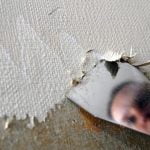Indoor air quality plays a crucial role in maintaining a healthy and comfortable home environment. Many homeowners may not realize that there is a feature in their homes that can greatly improve indoor air quality. This feature is essential for ensuring the well-being of everyone living in the space and can have a significant impact on overall health.
From reducing allergens and pollutants to promoting better respiratory health, proper indoor air quality has numerous benefits for both physical and mental well-being. In this article, we will explore the importance of indoor air quality and the key feature in homes that can help improve it: air purification systems. We will also discuss other ways to enhance indoor air quality, such as the use of indoor plants and additional features within homes.
By understanding the significance of indoor air quality and identifying effective measures to maintain it, homeowners can create a healthier and safer living environment for themselves and their families. Let’s delve into the world of indoor air quality and discover how to make our homes a haven of fresh, clean air.
The Benefits of Having Proper Indoor Air Quality
Proper indoor air quality in our homes is an essential factor for maintaining a healthy and safe environment. There are numerous benefits to having good indoor air quality, and it is crucial for homeowners to understand the significance of this feature in their homes.
Some of the key benefits of proper indoor air quality include:
- Reduction of allergens and pollutants that can cause respiratory issues
- Improved overall health and wellbeing for everyone in the household
- Enhanced comfort and productivity levels
- Prevention of mold and mildew growth
- Elimination of unpleasant odors
Having proper indoor air quality is not only about creating a comfortable living space, but it also contributes to the long-term health and wellness of everyone within the home. With the right features and systems in place, homeowners can enjoy these benefits and create a healthier environment for themselves and their families. One such feature that plays a significant role in improving indoor air quality is air purification systems.
Air purification systems are designed to remove harmful particles and contaminants from the air, effectively enhancing indoor air quality. These systems work by capturing pollutants such as dust, pollen, pet dander, mold spores, and other airborne particles. By investing in an air purification system, homeowners can significantly improve the overall health and wellbeing of their household members.
The Feature
Air purification systems are a crucial feature in homes that play a significant role in improving indoor air quality. These systems work to remove contaminants, pollutants, and allergens from the air, creating a healthier environment for you and your family. By incorporating air purification systems into your home, you can enjoy cleaner, fresher air and reduce the risk of respiratory problems and allergies caused by poor indoor air quality.
There are several types of air purification systems available for homes, each with its unique features and benefits. These include:
- High-Efficiency Particulate Air (HEPA) filters: These filters can trap particles as small as 0.3 microns, effectively capturing dust, pollen, pet dander, and other airborne particles.
- UV-C germicidal lamps: These lamps use ultraviolet light to sterilize and kill mold, bacteria, viruses, and other pathogens present in the air.
- Activated carbon filters: These filters remove odors, gases, and volatile organic compounds (VOCs) from the air, making it fresher and more pleasant to breathe.
By incorporating these air purification systems into your home, you can create a safe haven with improved indoor air quality. Furthermore, combining these systems with other features such as proper ventilation and the use of indoor plants can further enhance the overall indoor environment. With the right maintenance and regular cleaning of these systems, you can ensure that your home’s indoor air remains clean and healthy for everyone inside.
How Air Purification Systems Work
Air purification systems are an essential feature in homes that work to improve indoor air quality. These systems use advanced technology to remove harmful particles and pollutants from the air, creating a healthier environment for you and your family. By understanding how air purification systems work, you can make an informed decision about incorporating this beneficial feature into your home.
Air purification systems work by using a combination of filters and air circulation to remove contaminants from the air. The filters within the system trap particles such as dust, pollen, mold spores, pet dander, and even bacteria and viruses. As the air circulates through the system, these harmful particles are trapped in the filters, allowing clean and purified air to be distributed back into the living space.
One of the key components of air purification systems is the High-Efficiency Particulate Air (HEPA) filter. This type of filter is designed to remove 99.97% of particles that are 0.3 microns or larger in size. In addition to HEPA filters, many air purification systems also incorporate activated carbon filters, UV-C light technology, or ionizers to further enhance their effectiveness in removing pollutants from the air.
| Types of Air Purification Systems | Key Features |
|---|---|
| HEPA Filter Systems | Effective at removing airborne allergens and pollutants |
| Activated Carbon Filters | Can absorb odors, gases, and volatile organic compounds (VOCs) |
Different Types of Air Purification Systems Available for Homes
Air purification systems are a key feature in homes that significantly improve indoor air quality. These systems work to eliminate pollutants, allergens, and other harmful particles from the air, creating a healthier environment for occupants. There are several types of air purification systems available for homes, each with its own unique features and benefits.
One of the most common types of air purification systems is the High-Efficiency Particulate Air (HEPA) filter. These filters are able to capture 99.97% of particles that are 0.3 microns or larger, including dust, pollen, pet dander, and even some bacteria and viruses. HEPA filters are often used in standalone air purifiers or as part of HVAC systems.
Another type of air purification system is the UV-C light air purifier. These systems use ultraviolet light to kill bacteria and viruses in the air as it passes through the purifier. UV-C light has been shown to be effective at destroying airborne pathogens, making it an excellent choice for those looking to improve indoor air quality.
In addition to these types of air purification systems, there are also ionizer purifiers, activated carbon filters, and ozone generators available for use in homes. Each type of system offers its own unique benefits and may be more effective at targeting specific indoor air pollutants. By incorporating one of these different types of air purification systems into your home, you can significantly improve indoor air quality and create a healthier living space for you and your family.
The Impact of Indoor Plants on Indoor Air Quality
Indoor plants are not only decorative pieces, but they also play a significant role in improving indoor air quality. They act as natural air purifiers, effectively removing toxins and pollutants from the air. This feature has made indoor plants increasingly popular for homeowners looking to create a healthier living environment.
How Indoor Plants Improve Air Quality
Plants absorb carbon dioxide and release oxygen through the process of photosynthesis. Additionally, they can also remove harmful chemicals such as formaldehyde, benzene, and trichloroethylene from the air, which are commonly found in indoor environments. The presence of these pollutants can lead to various health issues such as headaches, dizziness, and respiratory problems. By having indoor plants, homeowners can reduce the concentration of these harmful substances in their homes.
Best Indoor Plants for Improving Air Quality
Some of the best indoor plants known for their air-purifying properties include spider plant, peace lily, snake plant, pothos, and rubber plant. These plants are low-maintenance and can thrive in various indoor conditions. Placing them strategically around the house can effectively enhance the overall air quality within the home.
Incorporating indoor plants into home decor not only adds a touch of nature to living spaces but also provides a natural solution to improving indoor air quality. With proper care and maintenance, homeowners can take advantage of this beneficial feature to create a healthier and more comfortable living environment for themselves and their families.
Other Features in Homes That Improve Indoor Air Quality
Nowadays, more and more homeowners are becoming increasingly aware of the importance of maintaining good indoor air quality. While air purification systems play a crucial role in improving indoor air quality, there are also other features in homes that can contribute to creating a healthier environment.
Proper Ventilation Systems
One of the key features that can help improve indoor air quality is a proper ventilation system. Good ventilation helps to remove stale indoor air and circulate fresh outdoor air into the living space. It is essential for reducing the concentration of indoor air pollutants such as dust, mold, and volatile organic compounds (VOCs). Homes with well-designed ventilation systems, like energy recovery ventilators (ERVs) or heat recovery ventilators (HRVs), can significantly enhance indoor air quality.
Natural Materials and Low-Voc Products
Another important feature in homes that can improve indoor air quality is the use of natural materials and low-VOC (volatile organic compounds) products. Using natural materials such as wood, bamboo, and cork instead of synthetic materials can help reduce the emission of harmful chemicals into the indoor environment. Additionally, choosing low-VOC paints, adhesives, and cleaning products can also contribute to maintaining better indoor air quality.
Humidity Control
Controlling humidity levels in your home is also a vital factor in ensuring good indoor air quality. High humidity levels can lead to mold growth and increase allergens, while low humidity levels can cause dryness and irritation. Features such as dehumidifiers and humidifiers can help maintain optimal humidity levels in your home, promoting a healthier indoor environment.
Incorporating these features into homes alongside with an efficient air purification system will ensure improved indoor air quality for a healthier living space.
How to Maintain and Improve Indoor Air Quality in Your Home
Air purification systems are a feature in the home that can significantly improve indoor air quality. These systems work by removing contaminants such as dust, pollen, pet dander, and other airborne particles from the air. This is especially beneficial for individuals who suffer from allergies or respiratory conditions.
One of the key benefits of having an air purification system in your home is the improvement in overall health. Poor indoor air quality can lead to various health issues such as allergies, asthma, and other respiratory problems. By removing harmful particles from the air, air purification systems can help reduce the risk of these health issues and promote a healthier living environment.
In addition to improving indoor air quality, air purification systems can also help eliminate unpleasant odors and create a more comfortable and enjoyable living space. Whether you live in a busy city with high levels of outdoor pollution or simply want to ensure that your family breathes clean and fresh air at home, investing in an air purification system is a practical and effective solution.
| Benefit | Detail |
|---|---|
| Improved overall health | Air purification systems reduce the risk of allergies, asthma, and respiratory problems. |
| Elimination of unpleasant odors | Air purification systems help create a more comfortable living space by getting rid of unwanted smells. |
Conclusion
In conclusion, it is essential to understand the importance of maintaining proper indoor air quality in our homes for the health and well-being of our families. The benefits of having improved indoor air quality are numerous, including reducing respiratory issues, allergies, and other health concerns. One feature in the home that significantly improves indoor air quality is air purification systems.
These systems work by removing pollutants and allergens from the air, creating a cleaner and healthier environment for everyone indoors. They come in various types, such as HEPA filters, UV germicidal lamps, and ozone generators, each targeting different pollutants to improve indoor air quality. Additionally, indoor plants can also contribute to better indoor air quality by absorbing carbon dioxide and emitting oxygen while reducing airborne toxins.
Aside from air purification systems and indoor plants, there are other features in homes that can also improve indoor air quality. These include proper ventilation systems, regular cleaning and maintenance of HVAC systems, using natural cleaning products, minimizing the use of synthetic fragrances, and controlling humidity levels indoors.
By incorporating these features into our homes and following proper maintenance practices, we can create a healthy and safe home environment with improved indoor air quality for ourselves and our loved ones. Recognizing the significance of this feature in our homes allows us to take proactive steps towards creating a healthier living space for all.
Frequently Asked Questions
What Features in Homes Improve Indoor Environmental Quality?
Features in homes that improve indoor environmental quality include proper ventilation systems, air filtration, and humidity control. Additionally, using low or zero VOC materials for construction and interior design can also contribute to better indoor air quality.
Which Factor Would Increase for Indoor Air Quality?
Factors that would increase indoor air quality include regular maintenance of HVAC systems, reducing the use of chemical cleaners and fragrances, and increasing the presence of plants indoors. Proper ventilation and frequent airing out of the home are also crucial.
What Makes Up Indoor Air Quality?
Indoor air quality is made up of various factors such as the presence of pollutants like dust, mold spores, pet dander, and volatile organic compounds (VOCs) from cleaning products and furniture. Other factors include humidity levels, proper ventilation, and the overall cleanliness of the living space.

I’m thrilled to have you here as a part of the Remodeling Top community. This is where my journey as an architect and remodeling enthusiast intersects with your passion for transforming houses into dream homes.





